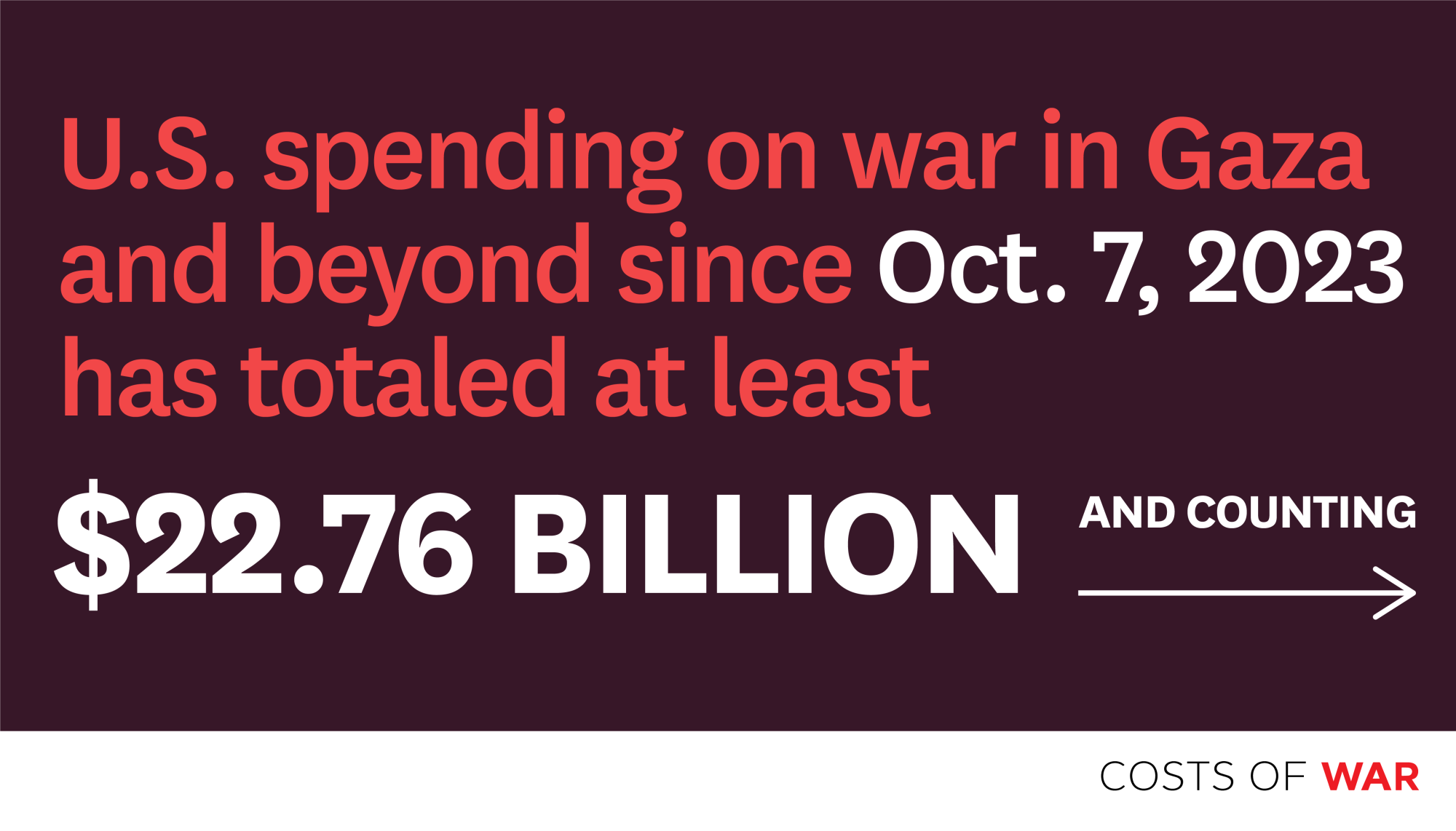Paper
Economist Linda J. Bilmes (Senior Lecturer, Harvard University) and policy analysts Stephen Semler (Co-Founder, Security Policy Reform Institute) and William D. Hartung (Senior Research Fellow, Quincy Institute) calculate that U.S. spending on Israel’s military operations and related U.S operations in the region total at least $22.76 billion and counting. This estimate is conservative; while it includes approved security assistance funding since October 7, 2023, supplemental funding for regional operations, and an estimated additional cost of operations, it does not include any other economic costs.

This figure includes the $17.9 billion the U.S. government has approved in security assistance for Israeli military operations in Gaza and elsewhere since October 7 – substantially more than in any other year since the U.S. began granting military aid to Israel in 1959. Yet the report describes how this is only a partial amount of the U.S. financial support provided during this war.
Related U.S. military operations in the broader region since October 7 are part of the fuller picture. In particular, the U.S. Navy has significantly scaled up its defensive and offensive operations against Houthi militants in Yemen, which the Houthis claim is related to Israel’s war in Gaza. Hostilities have escalated to become the most sustained military campaign by U.S. forces since the 2016-2019 air war against ISIS in Iraq and Syria. U.S. operations in the region, including in Yemen, have already cost the U.S. government $4.86 billion (included in the overall figure, above, of $22.76 billion).
This Houthi-related conflict has also cost the maritime trade an additional $2.1 billion, because shippers have been forced to divert vessels or pay exorbitant insurance fees. U.S. consumers may experience paying higher prices for goods as a result.
This report touches on the relationship between U.S. weapons manufacturers and the Israeli government, which have maintained longstanding commercial relations. The U.S. government has cited these commercial ties as one of the reasons why the U.S. should continue to supply foreign militaries, including the Israeli military, with weapons and equipment.

